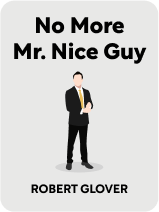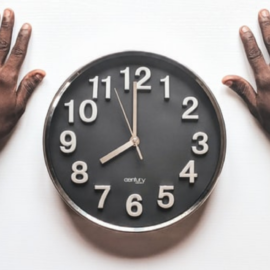

This article is an excerpt from the Shortform book guide to "No More Mr. Nice Guy" by Robert Glover. Shortform has the world's best summaries and analyses of books you should be reading.
Like this article? Sign up for a free trial here .
Do you want to learn about practicing non-attachment? How can it improve your confidence and mental health?
For centuries, Buddhist teachings have explored the idea of non-attachment, which involves severing unhealthy attachments to people, possessions, or states of mind. Practicing non-attachment has been shown to have benefits like improving your happiness and reducing stress.
Find out more about practicing non-attachment below.
Practicing Non-Attachment
Practicing non-attachment involves understanding what your attachments are.
Attachments are the external signifiers people use to win others’ approval (you “attach” these things to your personal value). These attachments can be something you do to your appearance or a behavior or trait you highlight, such as:
- Meticulously steaming your clothes for work every morning
- Obsessively thanking every cashier you interact with
- Being the first among your friends to own the newest iPhone
What’s wrong with putting effort into your appearance or doing something kind for a stranger? Nothing, on the surface. But the answer lies in one question: Who are you doing it for?
If you notice yourself doing something solely for the sake of others, you’re using it as an attachment. Someone might think a messy desk at work signifies he’s “bad.” So, he becomes obsessed with keeping it clean to assert how “good” he is. (If an Ideal Man keeps his desk at work clean, it’s because he wants to.)
| Practicing Non-Attachment in Buddhism Glover isn’t the only person to highlight the pitfalls of attachments. For centuries, Buddhist teachings have explored this topic, including the concept of “non-attachment,” or a state of being in which you sever unhealthy attachments. In his podcast episode “Understanding Non-Attachment,” Noah Rasheta—Buddhist lay minister—explains that in the context of Buddhism, attachments aren’t the things you own, but the things in your life that own you. He notes that the tenet of non-attachment doesn’t prevent you from buying yourself something nice or entering into a meaningful relationship, but it does stress that you don’t let these things control your life. Rasheta emphasizes that at its core, practicing non-attachment is about coming to terms with impermanence. When we release our attachment to something, we’re not necessarily letting go of that thing or relationship altogether, but giving up on our attachment to the permanence of the thing (or its meaning). It’s also about our tendency to compare things, particularly the past, present, and future. Letting go of your attachments helps you exist in the present moment. We can apply this definition of “attachments” and “non-attachment” to our everyday lives. For example, if you think you’re good because your car is always clean, then you’re owned by the need to clean your car. You won’t be free until this act is no longer an attachment but something you do in the present moment for yourself (simply to do it). |
Exercise: Practicing Non-Attachment
If you want to practice non-attachment effectively, you must first identify your approval-seeking habits:
- Think about the attachments you use in everyday life to gain external approval. List some of them here. (Remember, this can be something you do to yourself or highlight about yourself—from having a clean car to appearing to be the perfect father.)
- Out of the attachments you wrote down, which would you stop doing if you weren’t concerned about what others think? Why?
- In general, how might you live differently if the judgment of others was no concern? What would you start doing in this case? List what comes to mind.
- Look at the list of behaviors or actions you’d like to start—pick one. What’s stopping you from doing this?

———End of Preview———
Like what you just read? Read the rest of the world's best book summary and analysis of Robert Glover's "No More Mr. Nice Guy" at Shortform .
Here's what you'll find in our full No More Mr. Nice Guy summary :
- Why being a "Nice Guy" isn't actually a good thing
- Why Nice Guys miss out on a life of self-acceptance, empowerment, and satisfaction
- How to know if you are a Nice Guy and how to become an "Ideal Man" instead






